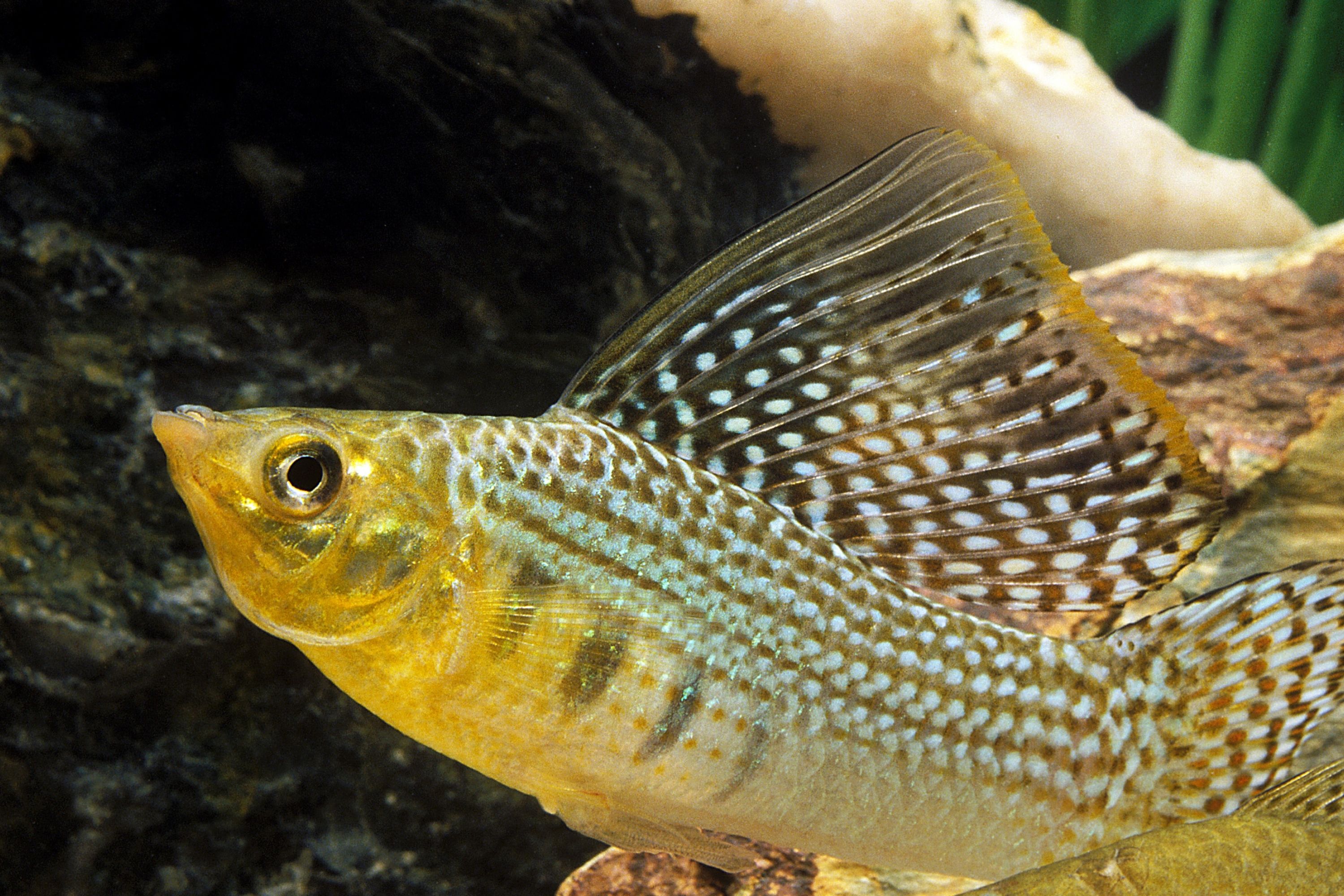Yucatan molly
(Poecilia velifera)

Description
Poecilia velifera, known as the Yucatan molly and also as the giant sailfin molly amongst aquarists, is a very large Livebearer that lives in coastal waters of the Yucatan peninsula. These live-bearer (Poeciliidae) fish are particularly well known for both the extreme size variation among males, and the sexual dimorphism between males and females in both body shape and behavior. It is outwardly similar to the sailfin molly, P. latipinna, though larger overall and with a higher and longer dorsal fin in males. Full-grown fish are usually larger than 10 cm (4 in) and large females can reach almost twice this length, though especially captive-bred individuals grow only to the size of sailfin mollies. The dorsal fins are the most distinctive character for telling the species apart: Those of the Yucatan molly have nearly 20 fin rays, counting where the fin meets the back, whereas the sailfin molly has less than 15 (intermediate numbers may indicate hybrids). If the males spread their dorsal fins in display, these have a distinct fan or trapezoid shape, with the upper edge being distinctly longer than the lower. The height of the dorsal fin, measured at the posterior edge, is a bit larger than the height of the tail. Especially small strains are suitable for keeping in an aquarium. However, this fish is not as easy to keep as the sailfin molly, let alone the P. sphenops (black molly). They need spacious tanks with well-aerated, slightly brackish water to thrive. They are able to withstand higher temperatures than most pet fish. Although they can survive over 30 °C for prolonged periods of time if other conditions are good, temperatures should be kept between 25 and 30 °C. Direct sunlight and an ample supply of plant food, such as lettuce, peas, or certain algae, are necessary for optimal health; in subtropical areas, they can be kept outside in unheated tanks in the summer; in temperate zones, backup heating may be necessary. This strain of molly can also be kept in saltwater reef tanks, and provide clean-up duties for the tank. To transition a molly to saltwater, adjustment time is needed; increase the salt content to match the reef tank over a period of three hours. They are bred like other mollies; in line with their general requirements, this is somewhat more difficult than in related species. It is especially hard to get males to grow their spectacular fins.
Taxonomic tree:







